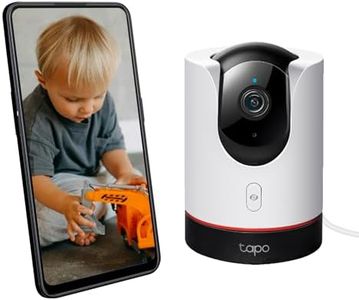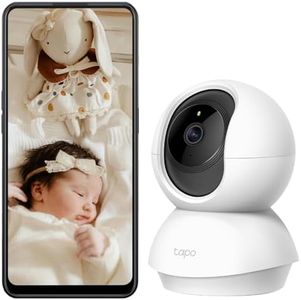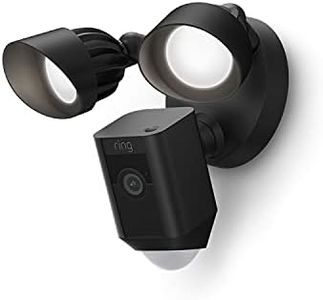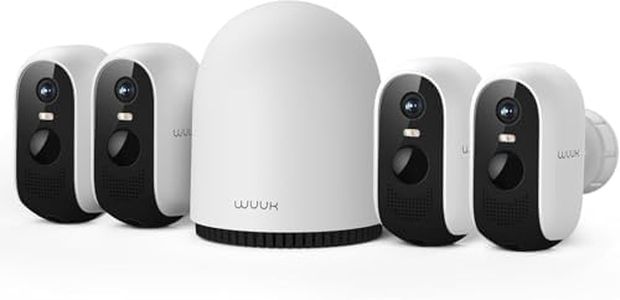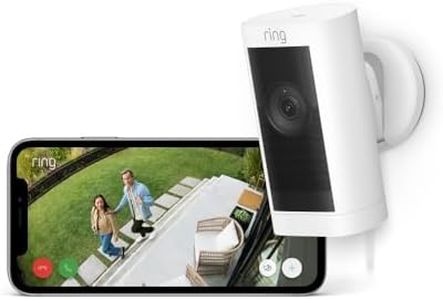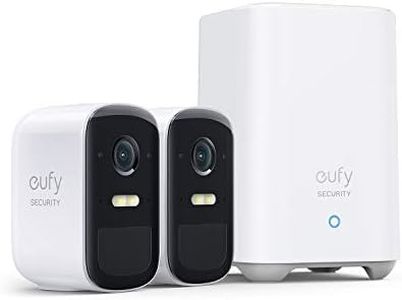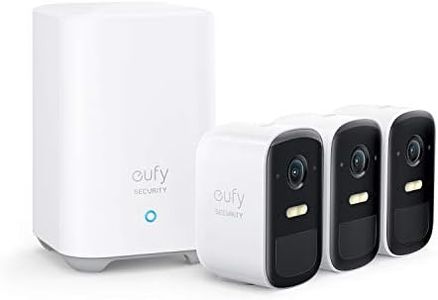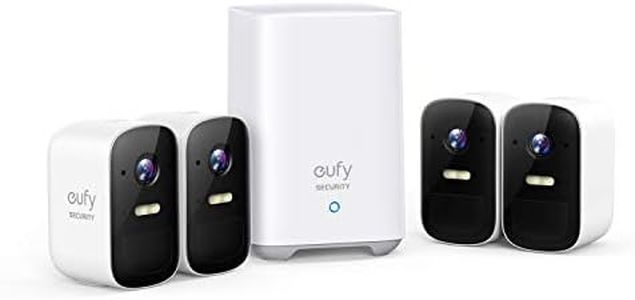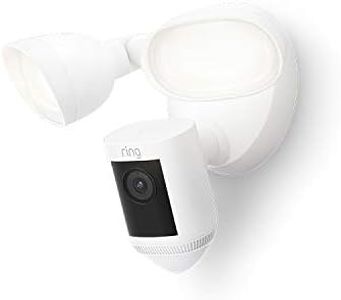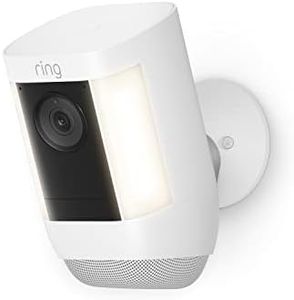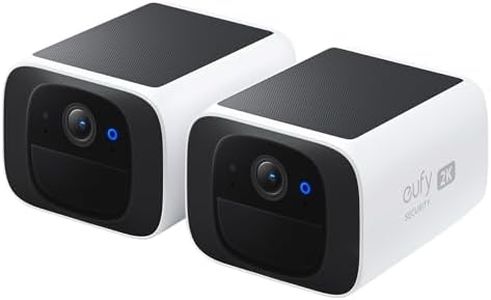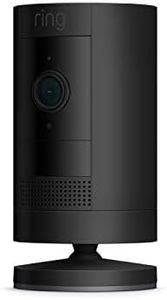We Use CookiesWe use cookies to enhance the security, performance,
functionality and for analytical and promotional activities. By continuing to browse this site you
are agreeing to our privacy policy
10 Best Home Security Cameras
From leading brands and best sellers available on the web.Buying Guide for the Best Home Security Cameras
Choosing the right home security camera is about ensuring the safety of your home while fitting your unique needs. Before you buy, think about where you want to place the camera, what type of monitoring you need (inside or outside), and how much detail you want to capture. Also, consider how you want to access footage—through your phone, computer, or another device. By understanding the core features, you’ll be able to find a camera that gives you peace of mind and matches your lifestyle.ResolutionResolution refers to how clear and detailed the video from the camera will be. Higher resolution means sharper images, which can be helpful for identifying faces or small details. Common resolutions include 720p (HD), 1080p (Full HD), and 4K (Ultra HD). 720p is suitable for basic monitoring, while 1080p offers clearer images that are good for most homes. If you need to capture fine details or cover a wide area, 4K offers even more sharpness, but will take up more storage space and may require faster internet. Choose higher resolution if clear identification is your priority, but for general awareness, lower resolutions can work and will require less storage.
Field of ViewThe field of view is how much area the camera can capture at once, measured in degrees. A narrow field of view (around 90 degrees) focuses on a specific area, while a wider view (130 degrees or more) covers a larger space. If you want to monitor a broad area like a yard or large room, a wider field of view is better. For doorways or focused spots, a narrower view works fine. Match the field of view to the area you need to keep an eye on to avoid blind spots.
Night VisionNight vision allows the camera to see in low light or total darkness, using infrared LEDs. Good night vision is important if you’ll be monitoring your property at night. Some cameras offer shorter night vision ranges (up to 20 feet), which are good for entryways or small rooms, while others can see much farther (over 60 feet) for outdoor spaces. Think about the lighting in the area you’ll monitor—choose longer night vision range for large or dark areas.
Connectivity (Wired vs Wireless)Connectivity describes how the camera sends its footage—either via wires or wirelessly through Wi-Fi. Wired cameras tend to be more stable, as they aren’t affected by Wi-Fi issues, but may be harder to install. Wireless cameras are much easier to set up and move, but depend on your Wi-Fi network's strength and reliability. For locations that are hard to wire or temporary setups, wireless is best. For permanent, reliable monitoring, wired options may be better.
Storage OptionsStorage refers to how and where the video recordings are kept. Some cameras store footage on a memory card inside the camera (local storage), while others upload to the cloud (online storage). Local storage gives you more privacy and works without an internet connection but can be lost if the camera is stolen. Cloud storage lets you access footage anywhere but may require a subscription. Think about if you want remote access and how long you want footage saved to help decide which is better for you.
Motion Detection and AlertsMotion detection means the camera only records or sends alerts when it thinks something is moving in its view, saving storage and making it easier to spot unusual activity. Simple motion detection spots any movement, while advanced versions can tell the difference between people, animals, or cars. If you want fewer false alarms, pick a camera that offers customizable motion zones or smarter detection features. Motion alerts are essential if you want to react quickly to events rather than just reviewing footage later.
Audio FeaturesSome cameras offer audio recording, two-way talk, or both. Audio lets you listen to what’s happening, while two-way talk means you can speak through the camera’s app to people near the camera. This is helpful for greeting guests, warning trespassers, or speaking to delivery people. If you think you’ll need to communicate or want fuller awareness of the scene, cameras with audio make sense.
Weather ResistanceFor outdoor cameras, weather resistance indicates how well the camera can handle rain, snow, heat, or dust. This is rated by an IP code (like IP65 or IP67). The higher the numbers, the better the protection against the elements. Indoor-only cameras don’t need weatherproofing, but for outside, especially in areas with harsh weather, choose cameras with higher IP ratings to ensure they last.
App and Smart IntegrationMost cameras come with apps to view footage and get notifications. Some also work with smart home systems like voice assistants or can trigger other devices (like lights) when they detect motion. The quality and features of these apps can vary. If you want to manage everything from your phone or integrate the camera with other smart devices, look for cameras with strong app support and smart home compatibility.
